Drone Racing Mental Preparation: Mastering the Psychological Game
Hey there! Some links on this page are affiliate links which means that, if you choose to make a purchase, I may earn a small commission at no extra cost to you. I greatly appreciate your support! Please see our Disclosure to learn more.
Introduction
In the high-speed world of drone racing, the difference between victory and defeat often comes down to mental preparation. While pilots spend countless hours perfecting their technical skills and tuning their equipment, the psychological aspect of racing frequently determines who stands on the podium. As drone racing continues to evolve into a highly competitive sport, mastering mental preparation has become as crucial as mastering throttle control.
Recent championship races have demonstrated this reality clearly. At the 2024 Winter Nationals, the defending champion lost a commanding lead after a minor clip in the qualifying rounds triggered a series of increasingly aggressive mistakes. Meanwhile, a relatively new competitor maintained composure through multiple technical challenges to secure their first podium finish. These contrasting performances highlight how drone racing mental preparation directly impacts racing outcomes.
The psychological edge in drone racing manifests in multiple ways: the ability to maintain focus during lengthy race days, quick recovery from setbacks, and consistent decision-making under pressure. Champions consistently attribute their success not just to their technical prowess, but to their drone racing mental preparation and resilience. As one top pilot noted, “The race is won or lost in your head long before you put on your goggles.”
Understanding Race Day Pressure
Every drone racer knows the feeling: standing at the flight line, goggles in hand, heart racing before a critical heat. Race day pressure affects even the most experienced pilots, manifesting in various ways that can impact performance. Understanding and managing this pressure has become a science in itself, with modern technology providing new insights into our physiological responses to stress.
The COOSPO Armband Heart Rate monitor has revolutionized how pilots understand their body’s response to race pressure. This sophisticated tool allows racers to track their physiological responses throughout the day, identifying patterns in heart rate variability that correlate with optimal performance windows. Top pilots use this data to recognize when they’re in their peak performance state and develop strategies to maintain or return to this optimal zone.
Common sources of competitive stress include:
- Technical malfunctions during preparation
- Weather conditions affecting flight characteristics
- Championship point implications
- Presence of significant competition
- Equipment concerns
While some pilots attempt to eliminate all race day pressure, research shows that moderate stress actually enhances performance. The key lies in managing this stress rather than eliminating it entirely. Many successful pilots report that a certain level of nervous energy helps them maintain focus and react more quickly during races. However, excessive pressure can lead to mistakes, poor decision-making, and reduced control precision.
Recent studies using heart rate monitoring during competitions reveal that pilots typically perform best when operating within 60-80% of their maximum heart rate. Higher rates often correlate with rushed decisions and overaggressive flying, while lower rates may indicate insufficient engagement. Understanding these patterns through tools like the COOSPO Armband helps pilots develop personalized strategies for maintaining optimal arousal levels throughout race day.
Learning to read and respond to physical stress indicators becomes a crucial skill. Experienced racers develop awareness of their personal stress signals and create specific response strategies for each one. This might include targeted breathing exercises when hands begin to shake, or brief meditation sessions when mental chatter becomes excessive. The goal isn’t to eliminate these responses but to manage them effectively while maintaining focus on performance.
Core Drone Racing Mental Preparation Techniques
Successful drone racing mental preparation begins long before race day, combining traditional mental training methods with modern technology. The most effective drone racers develop comprehensive routines that become as natural as checking their equipment.
Building Meditation Practice
Modern meditation technology has transformed how pilots develop their mental focus. The MUSE 2 Headband provides real-time feedback during meditation sessions, helping pilots understand when they’ve achieved optimal mental states for racing.
This EEG device pairs effectively with specialized meditation apps designed for athletes.
- The Headspace App offers sport-specific programs that help pilots develop pre-race mental clarity and competition focus.
- The Calm App provides targeted exercises for managing race-day anxiety and maintaining composure during high-pressure moments.
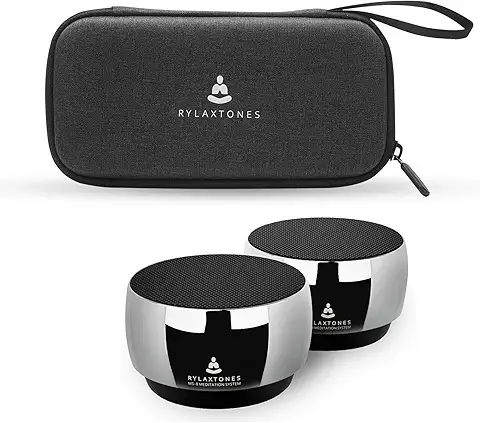
For pilots seeking a comprehensive approach, the Rylaxtones Meditation System Kit combines multiple sensory inputs to deepen mental training sessions. This system helps racers establish consistent meditation practices that translate directly to improved focus during races.
Pre-race Visualization Routines
“The Champion’s Mind” by Jim Afremow outlines visualization techniques specifically adapted for high-speed sports. Before each race, successful pilots mentally fly the course multiple times, imagining every turn, gate, and obstacle. This practice helps build muscle memory and reduces anxiety by creating familiarity with the course.
Top pilots combine visualization with the principles from “With Winning in Mind” by Lanny Bassham to create powerful mental rehearsal sessions that include:
Breathing Exercises and Focus Development
- Detailed course visualization from multiple perspectives
- Mental rehearsal of optimal racing lines
- Visualization of successful responses to common challenges
- Integration of physical movements with mental practice
“Mind Gym” by Gary Mack provides a framework for developing focus routines that integrate breathing exercises with mental preparation. His techniques help pilots establish:
Pre-race breathing patterns that optimize mental state
Recovery breathing for between heats
Focus maintenance during long race days
Stress response management protocols
Building Your Pre-flight Ritual
Drawing from “Peak Performance” by Brad Stulberg and Steve Magness, successful pilots develop pre-flight rituals that combine physical and mental preparation. These rituals typically include:
Equipment checks that double as mindfulness exercises
Brief meditation sessions using selected apps
Physical warm-up routines
Mental state monitoring with the COOSPO Armband
Final visualization sequence
Each element of the ritual serves both a practical and psychological purpose, creating a reliable pathway to optimal racing performance. These techniques, supported by both traditional methods and modern technology, form the foundation of effective drone racing mental preparation.
Focus Management During Races
Maintaining concentration throughout an entire race day requires specific strategies and tools. Modern technology has transformed how pilots track and analyze their focus during races, providing unprecedented insights into performance patterns.
Recording and Analysis Tools
The GoPro camera has become an essential tool for understanding race performance and mental state. By capturing clear, high-quality POV footage, pilots can review their decision-making processes and identify moments where focus wavered.
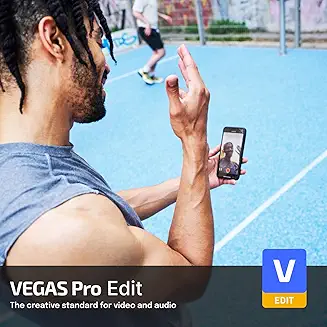
Vegas Pro Edit 21 elevates this analysis by providing professional-grade editing capabilities that allow pilots to study their performances in detail, synchronizing flight footage with telemetry data for comprehensive review.
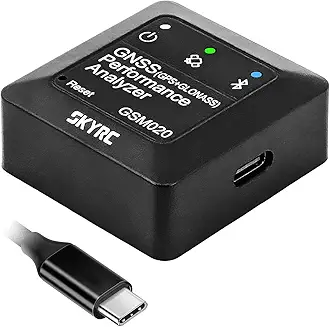
The GSM020 GNSS Performance Analyzer adds another dimension to performance tracking, providing precise data about flight paths and racing lines. This sophisticated tool helps pilots correlate their mental state with actual performance metrics, identifying patterns between focus levels and racing precision.
Mid-Race Mental Management
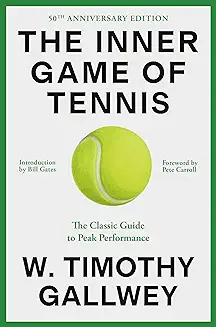
“The Inner Game of Tennis” by W. Timothy Gallwey provides fundamental principles for maintaining focus during high-pressure moments that apply perfectly to drone racing. His concept of “relaxed concentration” helps pilots find the balance between intensity and calm necessary for optimal performance.
When challenges arise during races, successful pilots:
- Acknowledge issues without dwelling on them
- Maintain consistent breathing patterns
- Focus on the next gate rather than past mistakes
- Stay within their capabilities while recovering
- Use visualization techniques between laps
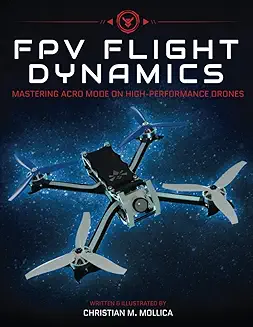
The principles from “FPV Flight Dynamics” by Christian Mollica help pilots understand the technical aspects of their sport so thoroughly that basic flight management becomes automatic, freeing mental resources for higher-level race strategy and focus maintenance.
Performance Tracking Integration
Modern race analysis combines multiple data sources for comprehensive understanding:
- Heart rate data from the COOSPO Armband
- Flight path analysis from the GSM020
- Video footage from the GoPro
- Mental state logs from meditation apps
This integrated approach helps pilots identify correlations between mental state, physical response, and race performance. Vegas Pro Edit 21 allows pilots to synchronize these various data streams, creating detailed analysis videos that inform future training and preparation strategies.
Using these tools and techniques effectively requires practice and systematic implementation. Many top pilots schedule regular analysis sessions where they review race footage, study performance data, and refine their mental management strategies based on concrete evidence rather than subjective impressions.
Building Mental Resilience
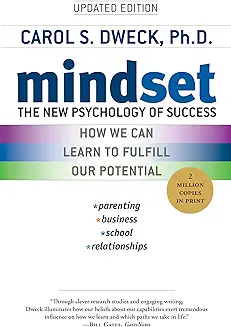
Mental resilience in drone racing develops through deliberate practice and the right mindset foundation. “Mindset” by Carol S. Dweck revolutionizes how pilots approach challenges and setbacks. Her research demonstrates that racers who view challenges as opportunities for growth consistently outperform those who see their abilities as fixed. This growth mindset becomes particularly crucial when dealing with crashes, equipment failures, or disappointing race results.

“With Winning in Mind” by Lanny Bassham provides a comprehensive mental management system that builds upon this foundation. His Olympic-proven techniques help pilots develop a self-image aligned with championship-level performance. Bassham’s approach teaches racers to process setbacks constructively, turning each challenge into a stepping stone for improvement rather than a barrier to success.
“The Champion’s Mind” by Jim Afremow adds practical techniques for building psychological strength specific to competitive environments. His methods help pilots:
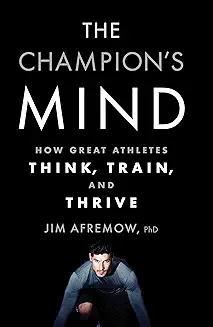
Maintain confidence during performance plateaus
Recover quickly from setbacks
Build consistent pre-race routines
Develop long-term mental toughness
Create realistic yet challenging goals
Learning from Setbacks
Every crash and lost race provides valuable data for improvement. Using the GSM020 GNSS Performance Analyzer alongside GoPro footage, pilots can objectively analyze what led to mistakes or failures. Vegas Pro Edit 21 allows detailed review of these moments, helping pilots understand the mental states and decision patterns that preceded problems.
Successful pilots maintain detailed records of their experiences, documenting:
- Technical aspects of performance
- Mental state during races
- Environmental conditions
- Areas for improvement
- Successful strategies
- Recovery techniques that worked
Building Confidence Through Practice
True confidence comes from systematic preparation and progressive challenge. The MUSE 2 Headband helps pilots track their improving ability to maintain focus, while the COOSPO Armband provides concrete data about stress management progress. This objective feedback reinforces confidence by demonstrating measurable improvement in mental control.
Both the Headspace and Calm apps offer specific programs for building mental resilience. These guided sessions help pilots develop:
- Emotional regulation skills
- Performance anxiety management
- Positive self-talk patterns
- Visualization capabilities
- Recovery techniques
The Rylaxtones Meditation System Kit provides structured progression in mental training, helping pilots build resilience systematically rather than sporadically. This methodical approach ensures that mental toughness develops alongside technical skills, creating well-rounded racers capable of performing under pressure.
Race Day Mental Strategies
Success on race day requires a comprehensive mental strategy that begins the moment you wake up. “Peak Performance” by Brad Stulberg and Steve Magness emphasizes the importance of structured routines that optimize both physical and mental states throughout competition days.
Morning Drone Racing Mental Preparation
Your race day begins with activating the mental tools and strategies developed during training. The Calm App’s morning meditation sessions help establish a focused yet relaxed state, while the MUSE 2 Headband provides immediate feedback on your mental preparation quality. The COOSPO Armband Heart Rate monitor helps you track your physiological responses from the start, ensuring you’re maintaining optimal arousal levels.
A champion’s morning routine includes:
- Light physical exercise to reduce tension
- Guided meditation using Headspace or Calm apps
- Course visualization sessions
- Equipment preparation without rushing
- Strategic nutrition and hydration
- Early arrival at the venue
Between-Heat Management
“The Champion’s Mind” by Jim Afremow provides specific techniques for maintaining mental freshness between heats. This critical period often determines overall performance across a long race day. Using the The Rylaxtones Meditation System Kit between heats helps pilots quickly reset their mental state and prepare for the next challenge.
Top pilots maintain peak performance between heats by:
- Finding quiet spaces for mental reset
- Reviewing previous heat footage on their GoPro
- Using short guided meditations
- Monitoring heart rate and stress levels
- Maintaining hydration and energy
- Conducting quick equipment checks
Managing Unexpected Challenges
“With Winning in Mind” teaches specific techniques for handling unexpected situations while maintaining focus. Equipment issues, weather changes, or schedule delays can disrupt mental preparation, but champions maintain composure through systematic response protocols.
The GSM020 GNSS Performance Analyzer helps pilots quickly adjust to changing conditions by providing objective data about flight performance. When combined with Vegas Pro Edit 21 for rapid flight analysis, pilots can make data-driven decisions about adjusting their approach while maintaining mental clarity.
Stress Response Management
Drawing from “Mind Gym,” successful pilots develop specific responses to different types of race day pressure. The COOSPO Armband provides real-time feedback about stress levels, allowing pilots to implement appropriate coping strategies before anxiety affects performance. This might include using the Headspace App’s emergency calm sessions or applying specific breathing techniques learned through regular practice.
Training Your Mental Game
Creating a systematic approach to mental training proves as crucial as developing technical skills. “Peak Performance” by Brad Stulberg and Steve Magness provides a comprehensive framework for optimizing both practice and recovery periods. Their research-based approach helps pilots understand how to structure training sessions for maximum psychological benefit.
Essential Training Resources
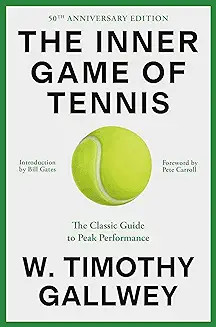
“The Inner Game of Tennis” by W. Timothy Gallwey, though written for another sport, offers fundamental principles that transform how pilots approach focus and performance. His concepts about managing the relationship between conscious and unconscious mind directly apply to drone racing’s split-second decision-making demands.

“Mind Gym” by Gary Mack provides practical exercises specifically designed for developing competitive mental strength. These exercises, when combined with modern technology like the MUSE 2 Headband and The Rylaxtones Meditation System Kit, create a powerful platform for mental training.
Technical Understanding
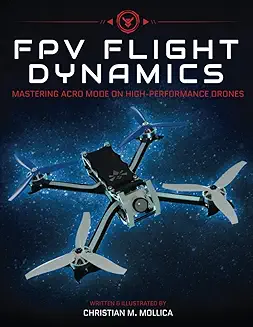
“FPV Flight Dynamics” by Christian Mollica bridges the gap between technical knowledge and mental preparation. Understanding the physics and mechanics of flight helps pilots develop more effective visualization practices and build confidence in their decision-making. This technical foundation supports the mental game by reducing uncertainty during high-pressure situations.
Practice Methods
Modern training combines traditional mental preparation with technology-enhanced analysis:
Recording and Review:
Using GoPro cameras to capture practice sessions
Analyzing footage with Vegas Pro Edit 21
Tracking performance metrics with the GSM020 GNSS Performance Analyzer
Monitoring physiological responses with the COOSPO Armband
Meditation and Focus Training:
Daily sessions using Headspace App
Stress management practice with Calm App
Biofeedback training with MUSE 2 Headband
Progressive mental challenges using Rylaxtones System
Setting Progressive Challenges
Success in mental training comes from systematically increasing difficulty while maintaining performance quality. This might include:
- Practicing under intentionally challenging conditions
- Adding distractions during simulator sessions
- Increasing the stakes in practice races
- Creating time pressure scenarios
- Simulating equipment issues
The GSM020 GNSS Performance Analyzer provides objective data about performance under these varying conditions, helping pilots track their mental strength development through concrete metrics rather than subjective feelings.
Working with Other Racers
The drone racing community provides invaluable opportunities for mental growth and development. “Mindset” by Carol S. Dweck emphasizes how interaction with peers can either enhance or hinder growth, depending on your approach to competition and collaboration.
Building Healthy Competition
“The Champion’s Mind” by Jim Afremow provides specific strategies for maintaining positive competitive relationships while pursuing excellence. His approach helps pilots balance personal ambition with community support, creating an environment where everyone improves.
Using tools like the GoPro camera and Vegas Pro Edit 21, pilots can share flight footage and analysis with fellow racers, creating collaborative learning opportunities. The GSM020 GNSS Performance Analyzer allows teams to compare flight paths and racing lines objectively, turning potential rivalry into technical discussion and mutual improvement.
Learning Through Collaboration
Successful pilots often form study groups to review:
- Race footage analysis sessions
- Mental preparation techniques
- Equipment optimization strategies
- Course analysis approaches
- Recovery methods
The The Rylaxtones Meditation System Kit and MUSE 2 Headband can be used in group settings, allowing pilots to share experiences and insights about drone racing mental preparation. The Headspace and Calm apps provide frameworks for group meditation sessions, helping teams develop collective focus and support systems.
Supporting Team Members
“With Winning in Mind” by Lanny Bassham includes valuable insights about team dynamics in individual sports. His mental management system helps pilots balance personal achievement with team success. Using the COOSPO Armband Heart Rate monitor, team members can better understand each other’s stress responses and provide more effective support during competitions.
Managing Competitive Relationships
Drawing from “Peak Performance,” successful racers understand that strong competition makes everyone better. This mindset helps pilots:
- Share knowledge while maintaining competitive edge
- Celebrate others’ successes genuinely
- Provide constructive feedback
- Handle defeat gracefully
- Support teammates during challenges
Top pilots use their understanding from “FPV Flight Dynamics” to enhance technical discussions with competitors, creating an environment where technical and mental aspects of the sport can be discussed openly and productively.
Creating Your Mental Training Program
Developing an effective mental training program requires a systematic approach that integrates both foundational skills and advanced techniques. This program should grow and evolve with your development as a pilot.
Building a Comprehensive System
Starting with “Peak Performance” by Brad Stulberg and Steve Magness’s principles, create a structured approach that balances training intensity with recovery. Your program should integrate tools and resources based on your current skill level and goals.
Essential Tools for Starters:
Headspace App for basic meditation and focus training
GoPro camera for flight recording and analysis
Basic racing journal
“Mindset” by Carol S. Dweck for foundational mental approach
Intermediate Development:
COOSPO Armband Heart Rate monitor for stress management
Vegas Pro Edit 21 for detailed flight analysis
“The Inner Game of Tennis” and “Mind Gym” for advanced mental techniques
rylaxtones meditation system kit
Advanced Training:
MUSE 2 Headband for meditation enhancement
GSM020 GNSS Performance Analyzer for detailed flight data
“With Winning in Mind” and “The Champion’s Mind” for competition psychology
“FPV Flight Dynamics” for technical mastery
Progress Tracking Methods
Document your mental training progress through multiple channels:
- Daily meditation logs from Headspace and Calm apps
- Heart rate data during practice and competition
- Flight performance metrics from the GSM020
- Video analysis notes from practice sessions
- Personal insights and observations
Program Adjustment Strategies
Regular review and adjustment of your mental training program ensures continued growth. Use data from your COOSPO Armband and GSM020 analyzer to identify areas needing attention. The comprehensive feedback from the MUSE 2 Headband helps fine-tune meditation and focus training.
The key to success lies in systematic implementation of these tools while maintaining flexibility to adjust based on performance data and personal experience. Remember that mental training, like physical training, requires consistent practice and patient progression.
Conclusion
Success in drone racing depends on the harmonious integration of technical skill and mental strength. Creating a personal mental preparation plan that grows with your development provides the foundation for consistent high-level performance.
The journey begins with fundamental tools like the Headspace and Calm apps, progressing through increasingly sophisticated resources like the MUSE 2 Headband and GSM020 GNSS Performance Analyzer. Essential reading materials, from “Mindset” by Carol S. Dweck to “The Champion’s Mind” by Jim Afremow, provide the theoretical framework that supports this technological progression.
Long-term development strategies should focus on:
- Regular practice with meditation tools and biofeedback devices
- Consistent documentation using GoPro footage and Vegas Pro Edit 21
- Integration of heart rate monitoring and performance analysis
- Steady progression through mental training resources
- Application of principles from key texts to racing scenarios
The path to mental mastery in drone racing never truly ends it’s a continuous process of learning, adapting, and growing. Core texts like “With Winning in Mind” by Lanny Bassham and “Peak Performance” by Brad Stulberg and Steve Magness remind us that excellence comes through systematic, patient development of both mind and skill.
Take your first steps by:
- Choosing your initial meditation app and establishing a daily practice
- Setting up basic recording and analysis tools
- Starting with fundamental texts on mental preparation
- Creating a structured progress tracking system
- Building relationships within the racing community
Remember that each pilot’s journey is unique. The tools and techniques that work best for you will emerge through consistent practice and careful attention to your personal development patterns. As you progress, your understanding of both the technical aspects covered in “FPV Flight Dynamics” and the mental elements outlined in “Mind Gym” will deepen, creating a comprehensive foundation for racing excellence.
The future of drone racing belongs to pilots who master not just their equipment, but their minds. Begin your mental preparation journey today, and watch as your racing performance transforms through improved psychological strength and focus.
Frequently Asked Questions
Q: Which mental training tools should I invest in first as a beginner?
A: Start with the Headspace or Calm app for meditation basics, and a GoPro camera for flight recording. These provide essential feedback while developing fundamental skills. Add the COOSPO Armband Heart Rate monitor once you’re ready to understand your stress responses during races.
Q: How long should I spend on mental preparation each day?
A: Begin with 10-15 minutes of guided meditation using apps like Headspace, gradually increasing to 20-30 minutes as your focus improves. Include 5-10 minutes of visualization before each practice session or race.
Q: Can I use the MUSE 2 Headband with other meditation apps?
A: While the MUSE 2 Headband works best with its dedicated app, you can use it alongside Headspace or Calm for general meditation sessions. The biofeedback data remains valuable regardless of which app guides your practice.
Q: Is it worth investing in Vegas Pro Edit 21 if I’m just starting out?
A: For beginners, simpler video editing software suffices. Consider upgrading to Vegas Pro Edit 21 when you’re regularly analyzing race footage and need detailed performance reviews, typically after your first year of competitive racing.
Q: Which book should I read first for mental preparation?
A: Start with “Mindset” by Carol S. Dweck to build a strong psychological foundation. This establishes the right approach to learning and competition before moving on to more specialized texts like “The Champion’s Mind” or “With Winning in Mind.”
Final Thoughts
Success in drone racing emerges from the delicate balance between cutting-edge technology and time-tested mental preparation techniques. The modern pilot has unprecedented access to powerful tools like the MUSE 2 Headband and GSM020 GNSS Performance Analyzer, but these instruments serve only to enhance rather than replace fundamental mental training principles.
Whether you’re tracking your heart rate with the COOSPO Armband during intense races or reviewing flight footage through Vegas Pro Edit 21, remember that these tools support your mental development journey rather than define it. The insights from authors like Carol S. Dweck, Jim Afremow, and Lanny Bassham remain as relevant in today’s high-tech racing environment as when they were first written.
The true power lies not in having all these resources at your disposal, but in how effectively you integrate them into your personal development path. Start small, build consistently, and let your mental training program evolve alongside your technical skills. Most importantly, remember that every champion began with the basics a commitment to growth, a willingness to learn, and the patience to develop their mental game one practice session at a time.












